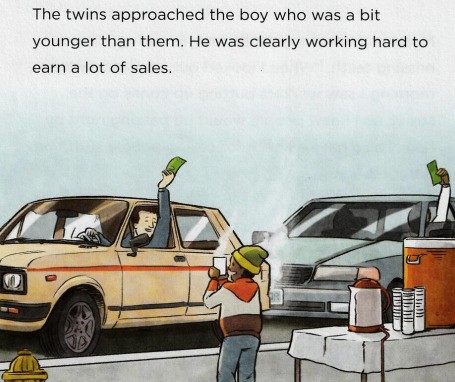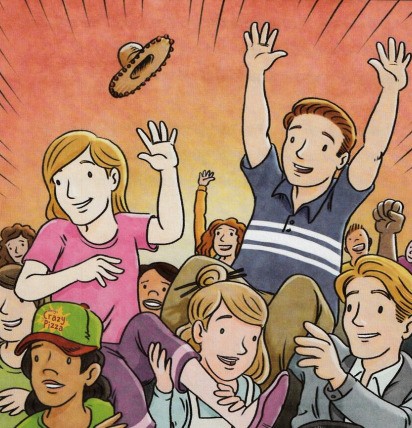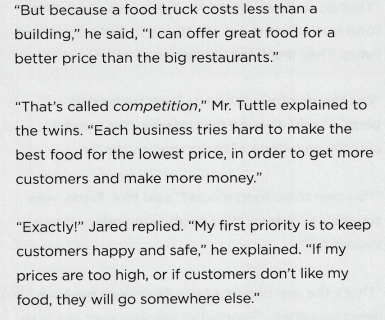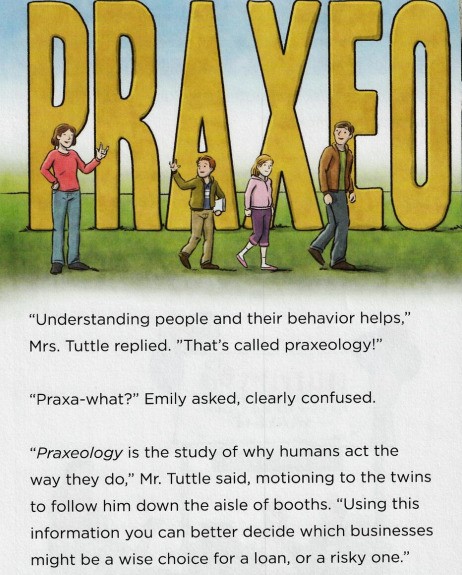What Is The Tuttle Twins Series Of Books?
The Tuttle Twins series of books, crafted by Connor Boyack and published by the Libertas Institute, aims to introduce children to a range of real-world social studies concepts, including economics, history, government, business, civics, and more. These concepts are presented in a straightforward and accessible manner, guided by a libertarian perspective.
Drawing from the ideas and theories of various prominent authors and thinkers spanning diverse fields, the series distills these complex concepts into engaging narratives featuring the titular twins. Through these stories, children are encouraged to critically explore the world around them.
To reinforce the educational value of each story, the Tuttle Twins series includes activity-packed PDF workbooks, in-book discussion questions, and additional learning resources.
Additionally, there is an animated television show, which, though not the primary focus of this review, aligns with many of the ideas and topics presented in the books.

For What Age Groups or Grade Levels Are The Tuttle Twins Books Designed?
The Tuttle Twins series is primarily designed for children aged 5 to 10, a range considered suitable by the author. Despite introducing complex ideas, the books are skillfully crafted to be accessible and comprehensible for younger readers. Each book adopts a narrative format, is relatively short to avoid intimidation, employs large font text, and is adorned with colorful, well-drawn illustrations. These elements collectively maintain a reasonable reading difficulty level.
While the series excels in simplifying intricate concepts, it can also serve as an excellent initial resource for older students, including those in later elementary and early middle school grades. Nonetheless, teenagers with an interest in the series and its ideas might be more inclined towards the Tuttle Teen series, as it offers content with a more mature presentation, distinct from the cartoon-like illustrations and simplified format of the original books.

What’s Needed To Teach Using The Tuttle Twins
Parents interested in incorporating Tuttle Twins books and their concepts into their teaching repertoire require just two essential components: the books themselves, serving as introductions to various ideas, and their accompanying workbooks, which help formalize and reinforce the learning process.
As a homeschooling resource, the series proves to be compact and user-friendly. With minimal materials to purchase, manage, and track, it seamlessly integrates into homeschool social studies curricula.

Educational Essentials
The Tuttle Twins books are concise, softcover volumes, typically spanning about 60 pages, written at approximately a 3rd-grade reading level. Each book revolves around broad topics in economics, government, philosophy, civics, and more. As the twins embark on their adventures, they encounter and explore a diverse array of related concepts.
The books feature captivating illustrations, with most pages showcasing one or more well-crafted, full-color, and intricately detailed images, designed in a modern style to engage young readers.
Towards the end of each book, parents can find information about the author whose works or ideas served as the basis for the story. This provides families with additional academic, historical, and philosophical context for their reading and offers potential sources for further exploration.
Some books may also include a glossary of essential terms, valuable for vocabulary lessons, along with discussion questions that parents can utilize to review crucial concepts or delve deeper into analysis and investigations.

What Are The Tuttle Twins Stories Like And How Do They Teach?
As previously mentioned, each installment in the Tuttle Twins series takes the form of a narrative.
The central characters of this series are the Tuttle Twins, Ethan and Emily, who gain valuable insights into the world by partaking in various adventures and experiences, often accompanied by friends and family.
These adventures place the twins in intriguing and enlightening scenarios. For example, they venture into entrepreneurship by establishing their theater business, assist other children in launching their small enterprises through lending, support local food truck owners, and investigate developments at a nearby beach and their impact on the community.

Each book operates as a standalone narrative, with its underlying concept typically rooted in the work of a well-known and influential author or academic. However, these concepts are presented through a contemporary lens, incorporating elements of American culture that resonate with children, such as food trucks, lemonade stands, theaters, and beach vacations.
The stories within the series exhibit some variation, though they often adhere to a common structure. Typically, the books commence with the Twins discovering inspiration in their surroundings, whether it’s a theater, a food truck, a fellow child’s hot chocolate stand, a book club, a new beach route, or a circus and its performers.
As the narrative unfolds and the twins explore or experiment with these concepts, they gradually grasp real-world principles, including competition, lending, incentives, monopolies, the free market, production and consumption, equal and unequal rewards, effective business planning, the advantages of innovation, and more. These concepts are introduced organically, with the twins engaging with real-world examples and receiving straightforward explanations from their family and acquaintances. Visual illustrations are also employed to further elucidate these points.

Moreover, most stories depict the twins confronting the complexities and challenges of the modern world, such as regulations, competition, the consequences of legislation and regulations, various laws, and individuals. These stories typically conclude on a positive note, with the twins resolving to address a potential issue (e.g., countering new competitors by securing sponsors to enhance variety and lower prices at their theater) or aspiring to effect positive change in their world (e.g., organizing grassroots campaigns to amend municipal laws, granting their food truck friends greater freedom to compete with established competitors).
Finally, each book often concludes with a set of discussion questions, emphasizing personal or critical analysis of the presented ideas, accompanied by a brief exposition on the underlying book, philosophy, or work that inspired the story.
Are The Books Worth The Price?
On the whole, we believe that the Tuttle Twins series offers substantial value, especially for homeschooling families who are receptive or open-minded to the free-market libertarian principles upon which these books are based.

Covering an array of subjects encompassing government, economics, civics, and more, the books employ an engaging storytelling format, clear and accessible writing, vivid illustrations, visual aids, and relatable experiences. These elements collectively serve to enhance children’s understanding of various topics.
Consequently, the Tuttle Twins series excels at teaching concepts and terminology, such as capital finance, small business planning, and incentivization, which other educational resources and programs may consider too advanced for young learners.
Furthermore, while not a comprehensive social studies curriculum in and of itself, when coupled with the accompanying workbooks and discussion questions, we believe that the Tuttle Twins series offers a fairly comprehensive and age-appropriate exploration of its ideas. This perspective and school of thought, which aren’t always integrated or emphasized in most homeschooling programs, can provide a unique educational experience.
Even in families where there may be disagreements with the books’ arguments and perspective, we see value in the series as it can serve as a catalyst for discussion or exploration of ideas, fostering critical thinking and dialogue—a valuable outcome in itself.

Conclusion:
In summary, the Tuttle Twins series offers a captivating and thought-provoking approach to acquainting children with essential concepts and ideas about the modern world and society.
Despite their storybook format, we were pleasantly surprised by the depth of learning in these books. The narratives delve into relatively intricate ideas, including capital investment, competition, small business ownership, the relationship between the state and society, opportunity costs, coercion, and free-market economics, among others.
Moreover, the series effectively employs illustrations, straightforward explanations, and visual aids to facilitate comprehension. It masterfully weaves these concepts into relatable scenarios that children can readily grasp, making them relevant to their everyday lives.
The writing style is generally accessible, and while the information can occasionally feel somewhat compressed within the dialogue, akin to other narrative-based educational programs like Sassafras Science or the Rush Revere history series, it flows well and can be an enjoyable read.
Notably, the series treats young readers as capable learners, avoiding condescension and assuming that they can grasp even relatively advanced ideas, such as capital financing, when explained effectively—an approach that we find refreshing.
However, it’s crucial to acknowledge that the Tuttle Twins series espouses a very specific worldview, that of free-market libertarianism. In essence, the series does not offer a neutral examination of underlying concepts or issues and takes a firm, albeit openly stated, stance on topics like subsidies, government intervention, business regulation, the free market, and incentivization.
While this alignment may not pose an issue for families who share this worldview, it could present a concern for progressive and even some conservative homeschooling families who may disagree with the books’ perspective or desire a more balanced presentation of alternative viewpoints.














